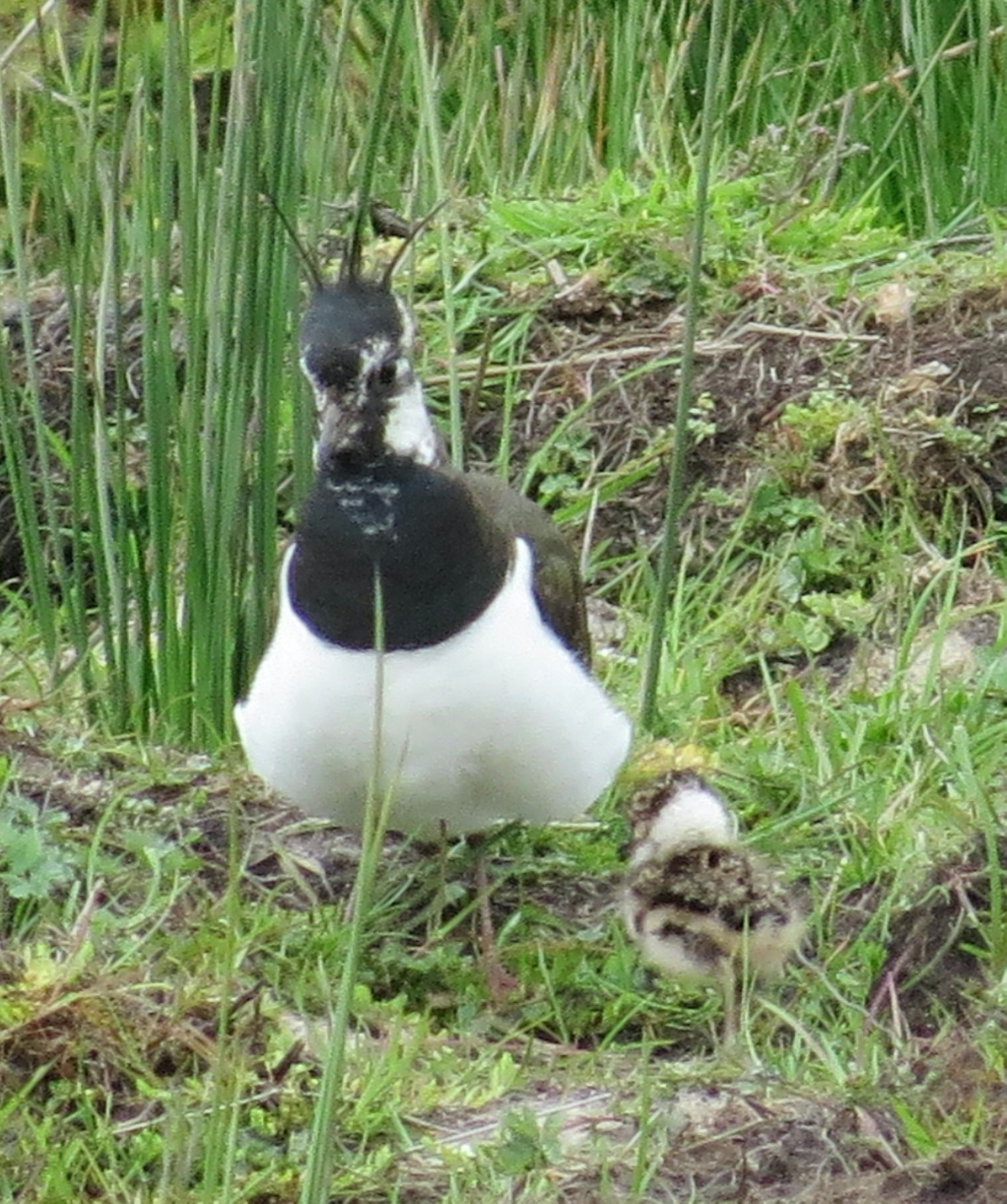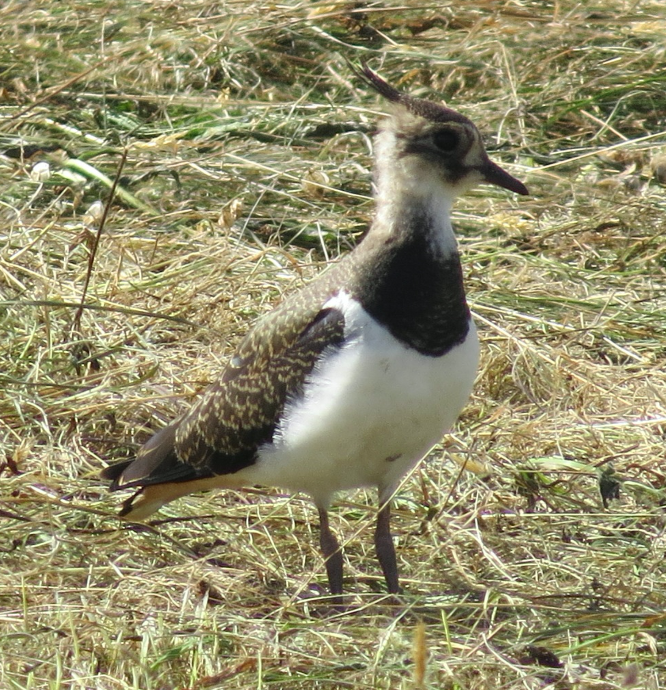Lapwings (Vanellus vanellus) were once very common in our area. As elsewhere in the UK, this species has suffered massive losses. The population in England and Wales has decreased by 80% since 1960. Lapwing are now on the Red List of Birds of Conservation Concern and feature on the UK Biodiversity Action Plan. We have tried hard to encourage these delightful wading birds and do still see and hear them on the wildlife site. Lapwings arrive in the valley in spring and are seen in the wet grassland of Fields 3, 4 and 5 (see Map). They gather and feed there in numbers during February-March, before spreading out to breed in surrounding areas and elsewhere. The largest number we have seen together at one time was 123, in spring 2016.
A few lapwings, typically 5 or 6 pairs, stay to breed in these wet fields, choosing nest sites on the ground where the grass is short enough to allow them to see approaching predators at a distance. When the young hatch they tend to move towards wetter areas in Fields 3 and 4 and particularly to the shallow and muddy margins of the pond and scrape to feed on invertebrates. The fledged young tend to gather together in Autumn prior to making off to their winter quarters at coastal estuaries.
Photographs of Lapwing
Click on the photograph for larger images and captions.












Sightings of Lapwing on the Site
The chart below shows the maximum number of Lapwing seen on the wildlife site each month for selected years. Click or tap the year buttons to show monthly population counts for each year. Hover over or tap the chart to display the number observed in any selected month.
2013
2014
2015
2016
2017
2018
2019
2020
2021
JAN
FEB
MAR
APR
MAY
JUN
JUL
AUG
SEP
OCT
NOV
DEC
Further Information
For further information on the Lapwing, please click here.


